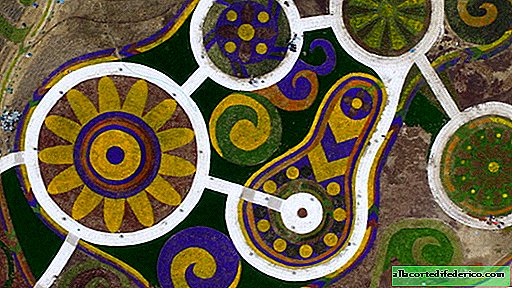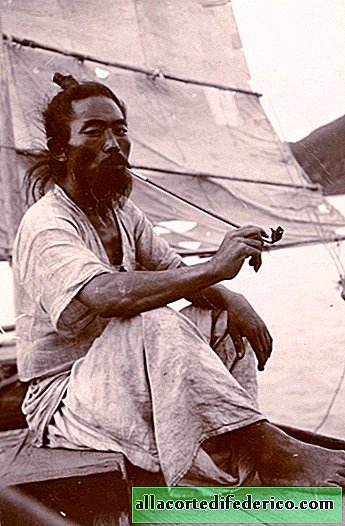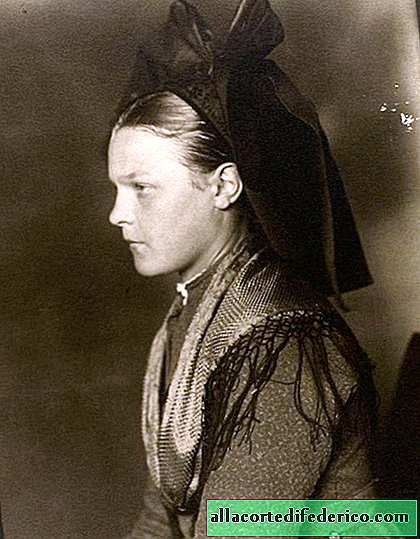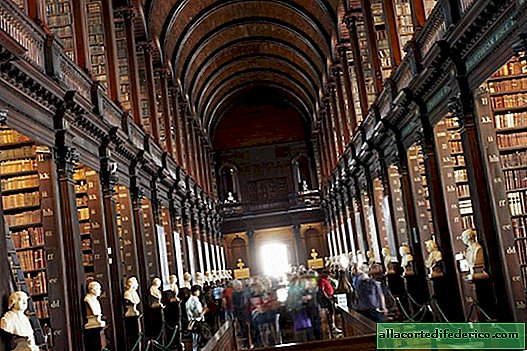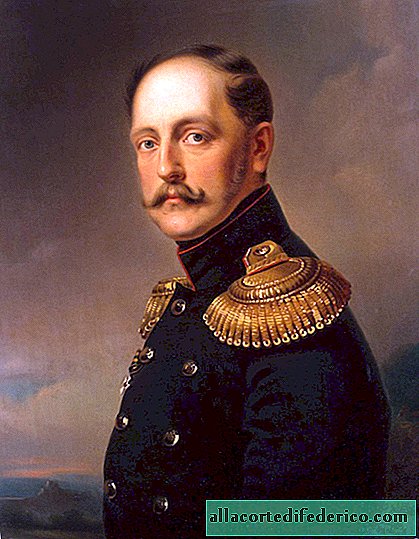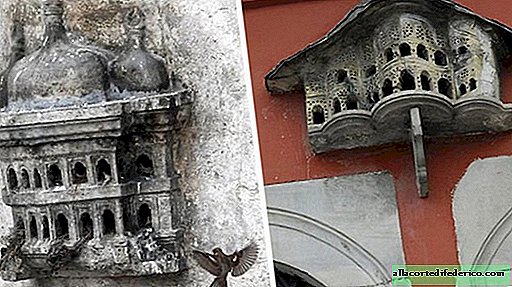Coptic Cemetery in Cairo
Continuing the theme of cemeteries in Cairo. If the second oldest Jewish cemetery in the world left a feeling of a scorched desert, with crows, packs of dogs, homeless people living in the midst of gravestones (warmly), and is considered one of the most criminal in the Egyptian capital, then the Coptic Christian cemetery refers you to the era of the Ancient Pharaoh Egypt, except that many crypts since the 1930s. XX century.
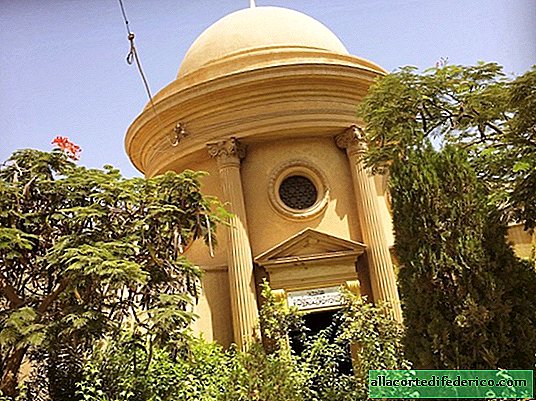
The Egyptian Copts in terms of common historical destiny and their role in society can be compared with the situation of Jews in Europe and the Russian Empire, as well as Old Believers after the Nikon reform. They oppressed those and those, they all subsequently managed to succeed in entrepreneurship and create (and for whom to preserve) their own cultural identity. Copts in Egypt 10-15% of the current 95 million population of the country, but they are very noticeable in business. It is especially noticeable precisely on Fridays, when all Muslim traders on the eve of the Friday sermon stop working for 2 hours, and before that they clean, wash, clean their trading shops, then the Copts continue to work literally under the imam’s sermon and earn money. It is noteworthy that if you go to a Muslim merchant's shop, then the neighbors will immediately come up and remind you that it is necessary to close the shop.

According to ancient tradition, Christianity was brought to Egypt by the Apostle Mark during the reign of Emperor Claudius around 42 AD (According to Eusebius of Caesarea, Mark came to Alexandria in the first or third year of the reign of Emperor Claudius, that is, 41 or 43 CE The Saint Mark left a significant Christian community in Alexandria. For half a century, Christianity spread from Alexandria throughout Egypt, and Scripture was translated into Coptic, and by the beginning of the third century, Christians made up the majority of the population of Egypt.
The Coptic church itself is not one of the local Orthodox churches of the Byzantine tradition and took shape as a distinctive autocephalous church due to the rejection of the decision of the Council of Chalcedon of 451 AD due to the condemnation of monophysitism by Constantinople (the doctrine in Christianity, postulating that there is only one, only Divine nature in Jesus Christ and rejecting His true humanity). Monophysitism itself was supported by the rest of the Old Eastern churches, because from the second half of the 5th century it has been in a split with the Orthodox Church of the Byzantine rite. Church schism and conflict with Byzantium led to the creation in Egypt of an alternative Greek ethnicity Chalcedonian department of Alexandria with the Greek rite. The services themselves are performed in the Coptic language, which is the last stage in the development of the ancient Egyptian language, which was still spoken in the era of the Pharaohs. The present Coptic language (starting from the 4th century AD) uses its own alphabet based on the Greek writing system with the addition of old letters from ancient Egyptian writing.

In 641, Arabs invaded Egypt, who opposed the Byzantine army, but did not meet any resistance from the local population. However, resistance from the Egyptians to Arab rule in Egypt began to be felt after some time and lasted the whole IX century.
After the conquest of Egypt by the Arabs, the Coptic letter began to gradually lose its significance, until, finally, it was completely replaced by the Arabic from official use. From the XI-XII centuries. the tongue begins to die out, being replaced by Arabic. It is still preserved as the main language of worship, as well as the language of communication in some Coptic families and remote areas of Egypt with a predominance of the Coptic population.

In Egypt and Ethiopia, you can easily distinguish between an Arab and a Coptic. And it’s not even anthropological signs - on the wrist of the copt (for men and women) there is a tattoo in the form of a cross. They do it most often in childhood. But the reasons and where this tradition came from are not known for certain.
There are several versions:
- when in the 7th century the Egyptian authorities banned Christians from wearing crosses, Copts began to wear (or draw) a cross on the inside of their wrists;
- in the case of persecution, those who have such a sign will not be tempted to hide their faith and renounce it, since this sign irrefutably indicates belonging to Christianity;
- in case of death, to be buried according to Christian customs. Since the Copts lived among the Arabs, it was likely that they could be confused with Muslims.

The arrangement of Coptic churches is similar to the Orthodox. The altar part is separated from the main part of the temple by a carved barrier. The role of the royal gates, as a rule, is played by the veil, which is opened at certain moments of worship. Men and women are located in the temple separately, sometimes the male part of the temple from the female part is also separated by a partition. The altar partition, unlike the Orthodox tradition, does not necessarily serve as an iconostasis - icons can be placed on it, however, icons on it can be completely absent and located in other parts of the church. Parishioners during worship are sitting on benches or special chairs arranged in rows.

Starting from the 4th century, the Church begins to decorate the walls of temples with frescoes and icons. Signs of a specific Coptic style begin to appear in Coptic art: eyes and ears become larger in comparison with the proportions of the whole face, the mouth decreases, and the size of the head increases in comparison with the body - which is a sign of spiritual relations with God and devotion to prayer. The faces of the martyrs are usually full of peace.

Contemporary Coptic art is also known as the neo-Coptic school. In some eras of Coptic history, icons were the main means of expression. They retained most of the traditional aspects. The basic principles are a greater concern for religious truth and beauty than for realism, or for depicting depth and perspective. As in Byzantium and adjacent traditions, icons are painted frontally, looking directly at the viewer.
The school was formed in the 1960s, based on the styles and traditions characteristic of the icons of the III-VII centuries. The masters of this early school of icon painting especially carefully wrote out the eyes of saints who were not looking at the worshipers, but only in the distance they knew. At the same time, they did everything possible to avoid unnecessary details and decoration, revealing to believers only those details that are necessary for understanding the image.

There is a stereotype that the Copts are the same ancient Egyptians in contrast with the newcomers Arabs. In fact, the Egyptian Muslims for the most part are exactly the same descendants of the ancient Egyptians as the Copts. In fact, the Egyptians are a single people, divided by confessional affiliation: the ancestors of some remained in the bosom of the previous religion, while the ancestors of others adopted a new faith.










